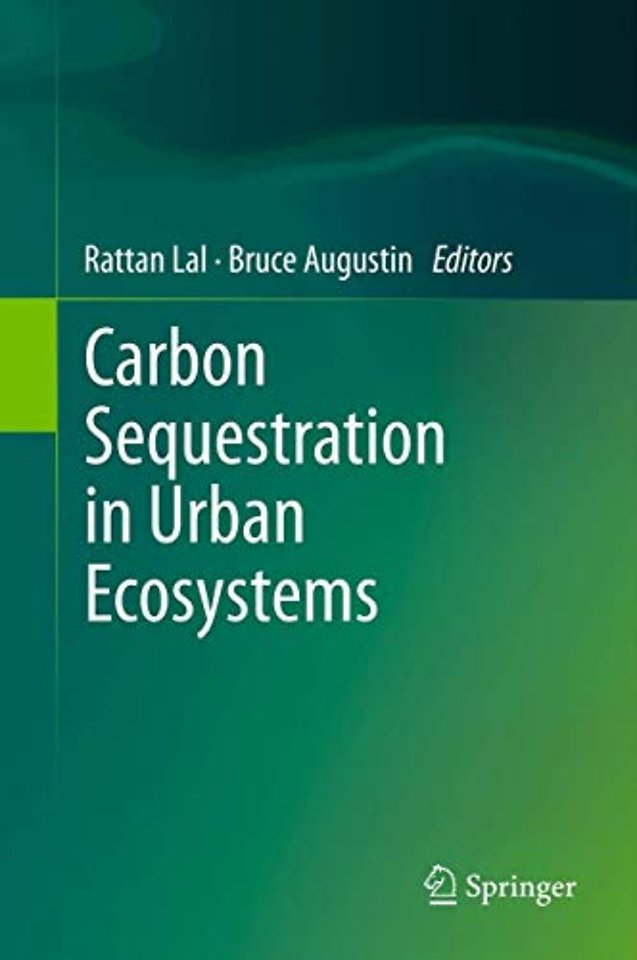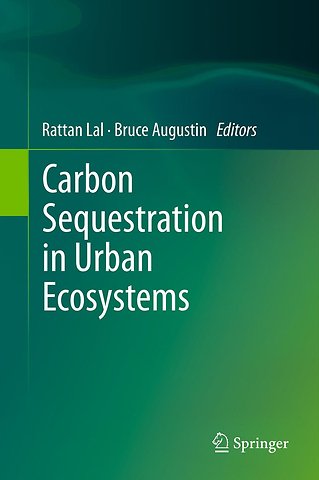<p>Foreword<br>PART I. Urban Ecosystems and Climate Change<br>1. Urban Ecosystems and Climate Change; R. Lal<br>2. Adapting Urban Land Use in a Time of Climate Change; Optimising Future Land-use Patterns to Decrease Flood Risks; E.van Leeuwen, E. Koomen<br>3. Comparison of Methods for Estimating Carbon Dioxide Storage by Sacramento’s Urban Forest; E. Aguaron, E.G. McPherson<br>4. Terrestrial Carbon Management In Urban Ecosystems And Water Quality; K. Lorenz, R. Lal<br>PART II. Urban Forests<br>5. Carbon Stocks in Urban Forest Remnants: Atlanta and Baltimore as Case Studies; I. D. Yesilonis, R. V. Pouyat<br>6. Urban Trees for Carbon Sequestration; B.C. Scharenbroch<br>7. Carbon Storage in Some Urban Forest Soils of Columbus, Ohio, USA; K. Lorenz, R. Lal<br>PART III. Turfgrass and Home Lawns<br>8. Carbon Dynamics and Sequestration in Urban Turfgrass Ecosystems; Y. Qian, R. Follett<br>9. Carbon sequestration potential in urban soils; S. Brown, E. Miltner, and C. Cogger<br>10. Carbon Sequestration in Turfed Landscapes: A Review; E.A. Guertal <br>11. Microbial Control of Soil Carbon Accumulation in Turfgrass Systems; W. Shi, D. Bowman, T. Rufty<br>12. Using Soil Health Indicators to Follow Carbon Dynamics in Disturbed Urban Environments- A Case Study of Gas Pipeline Right-of-Way Construction; R. R. Schindelbeck, H. M. van Es<br>13. Carbon Sequestration in Golf Course Turfgrass Systems and Recommendations for the Enhancement of Climate Change Mitigation Potential; A. L. Selhorst, R. Lal<br>14. Modeling Carbon Sequestration in the U.S. Residential Landscape; G. Zirkle, R. Lal, B. Augustin, R. Follett<br>PART IV. Current Trends in Urban Ecosystems<br>15. Improving Soil Quality for Urban Agriculture in the North Central U.S.;J. Beniston, R. Lal<br>16. Carbon Cycle of Urban Ecosystems; G. Churkina<br />17. Legacy Effects of Highway Construction Disturbance and Vegetation Management on Carbon Dynamics in Forested Urban Verges; T. L. L. Trammell, M. M. Carreiro<br>PART V. Sustainable Management of Urban Ecosystems<br>18. Global Urbanization and Demand for Natural Resources; C. Yeh, S. Huang<br>19. Toward Greening of Urban Landscapes; R. Lal</p>

